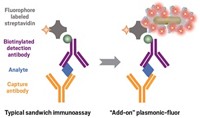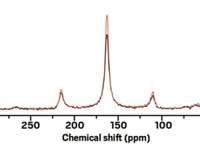Advertisement
Grab your lab coat. Let's get started
Welcome!
Welcome!
Create an account below to get 6 C&EN articles per month, receive newsletters and more - all free.
It seems this is your first time logging in online. Please enter the following information to continue.
As an ACS member you automatically get access to this site. All we need is few more details to create your reading experience.
Not you? Sign in with a different account.
Not you? Sign in with a different account.
ERROR 1
ERROR 1
ERROR 2
ERROR 2
ERROR 2
ERROR 2
ERROR 2
Password and Confirm password must match.
If you have an ACS member number, please enter it here so we can link this account to your membership. (optional)
ERROR 2
ACS values your privacy. By submitting your information, you are gaining access to C&EN and subscribing to our weekly newsletter. We use the information you provide to make your reading experience better, and we will never sell your data to third party members.
Analytical Chemistry
Common chelator serves as detector for health-relevant metals
EDTA labeled with 13C can distinguish among multiple divalent cations using NMR or MRI
by Jyllian Kemsley
November 14, 2016
| A version of this story appeared in
Volume 94, Issue 45
Calcium, magnesium, and zinc are divalent metal ions essential for good health. Other divalent metals, such as cadmium, lead, and arsenic, are toxic. Turning to common metal-chelating agents, researchers have found that they can use nuclear magnetic resonance spectroscopy and magnetic resonance imaging to quantitatively sense and distinguish among all these metals in blood serum (Anal. Chem. 2016, DOI: 10.1021/acs.analchem.6b03546). Gil G. Westmeyer of the Technical University of Munich and colleagues labeled the metal-coordinating carboxyl groups of ethylenediaminetetraacetic acid (EDTA) or ethylene glycol bis(2-aminoethyl ether)-N,N,N′,N′-tetraacetic acid (EGTA) with 13C. When either of the compounds binds the metals, 13C NMR spectra show well-separated chemical shifts that allow the researchers to distinguish between the metals. For example, they were able to quantitate millimolar concentrations of Ca2+ in human serum in the presence of competing concentrations of Mg2+. The researchers were further able to increase the sensitivity to micromolar concentrations for NMR and MRI by using dynamic nuclear polarization, which involves transferring spin polarization from electrons of a radical to the 13C nuclei to enhance their NMR signals.





Join the conversation
Contact the reporter
Submit a Letter to the Editor for publication
Engage with us on Twitter